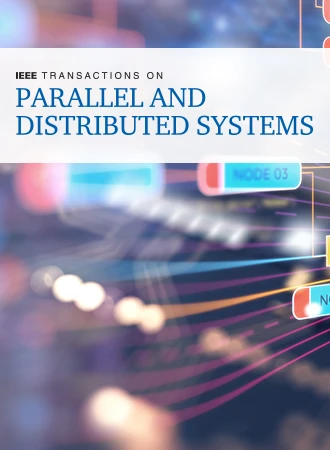Large-Scale Neural Network Quantum States Calculation for Quantum Chemistry on a New Sunway Supercomputer
IF 6
2区 计算机科学
Q1 COMPUTER SCIENCE, THEORY & METHODS
IEEE Transactions on Parallel and Distributed Systems
Pub Date : 2025-10-15
DOI:10.1109/TPDS.2025.3620251
引用次数: 0
Abstract
Quantum many-body system can be solved with neural-network method. Nonetheless, the practical deployment of neural network quantum states (NNQS) in large-scale electronic structure analyses faces challenges, chiefly the high sampling cost and the complexity of local energy computations. To overcome these computational barriers, we present an innovative data-parallel NNQS-Transformer implementation. This implementation introduces a hybrid multi-layer workload balancing strategy that effectively addresses previous load imbalance issues while leveraging Julia’s portability to achieve targeted performance optimizations. Through extensive testing, we validate our approach using comprehensive quantum chemistry calculations on systems containing up to 120 spin orbitals, where previous methods were limited to much smaller scales. The implementation demonstrates exceptional scalability on the Sunway platform, achieving 92% strong scaling and 98% weak scaling efficiencies when utilizing up to 37 million processor cores. These significant performance improvements mark a crucial step toward making NNQS calculations practical for real-world quantum chemistry applications.新型神威超级计算机上量子化学的大规模神经网络量子态计算
量子多体系统可以用神经网络方法求解。然而,神经网络量子态(NNQS)在大规模电子结构分析中的实际应用面临着挑战,主要是采样成本高和局部能量计算复杂。为了克服这些计算障碍,我们提出了一种创新的数据并行NNQS-Transformer实现。该实现引入了混合多层工作负载平衡策略,该策略有效地解决了以前的负载不平衡问题,同时利用Julia的可移植性来实现目标性能优化。通过广泛的测试,我们在包含多达120个自旋轨道的系统上使用全面的量子化学计算来验证我们的方法,而以前的方法仅限于更小的尺度。该实现在神威平台上展示了卓越的可扩展性,在使用多达3700万个处理器内核时,实现了92%的强扩展效率和98%的弱扩展效率。这些显著的性能改进标志着NNQS计算在实际量子化学应用中的重要一步。
本文章由计算机程序翻译,如有差异,请以英文原文为准。
求助全文
约1分钟内获得全文
求助全文
来源期刊

IEEE Transactions on Parallel and Distributed Systems
工程技术-工程:电子与电气
CiteScore
11.00
自引率
9.40%
发文量
281
审稿时长
5.6 months
期刊介绍:
IEEE Transactions on Parallel and Distributed Systems (TPDS) is published monthly. It publishes a range of papers, comments on previously published papers, and survey articles that deal with the parallel and distributed systems research areas of current importance to our readers. Particular areas of interest include, but are not limited to:
a) Parallel and distributed algorithms, focusing on topics such as: models of computation; numerical, combinatorial, and data-intensive parallel algorithms, scalability of algorithms and data structures for parallel and distributed systems, communication and synchronization protocols, network algorithms, scheduling, and load balancing.
b) Applications of parallel and distributed computing, including computational and data-enabled science and engineering, big data applications, parallel crowd sourcing, large-scale social network analysis, management of big data, cloud and grid computing, scientific and biomedical applications, mobile computing, and cyber-physical systems.
c) Parallel and distributed architectures, including architectures for instruction-level and thread-level parallelism; design, analysis, implementation, fault resilience and performance measurements of multiple-processor systems; multicore processors, heterogeneous many-core systems; petascale and exascale systems designs; novel big data architectures; special purpose architectures, including graphics processors, signal processors, network processors, media accelerators, and other special purpose processors and accelerators; impact of technology on architecture; network and interconnect architectures; parallel I/O and storage systems; architecture of the memory hierarchy; power-efficient and green computing architectures; dependable architectures; and performance modeling and evaluation.
d) Parallel and distributed software, including parallel and multicore programming languages and compilers, runtime systems, operating systems, Internet computing and web services, resource management including green computing, middleware for grids, clouds, and data centers, libraries, performance modeling and evaluation, parallel programming paradigms, and programming environments and tools.
 求助内容:
求助内容: 应助结果提醒方式:
应助结果提醒方式:


